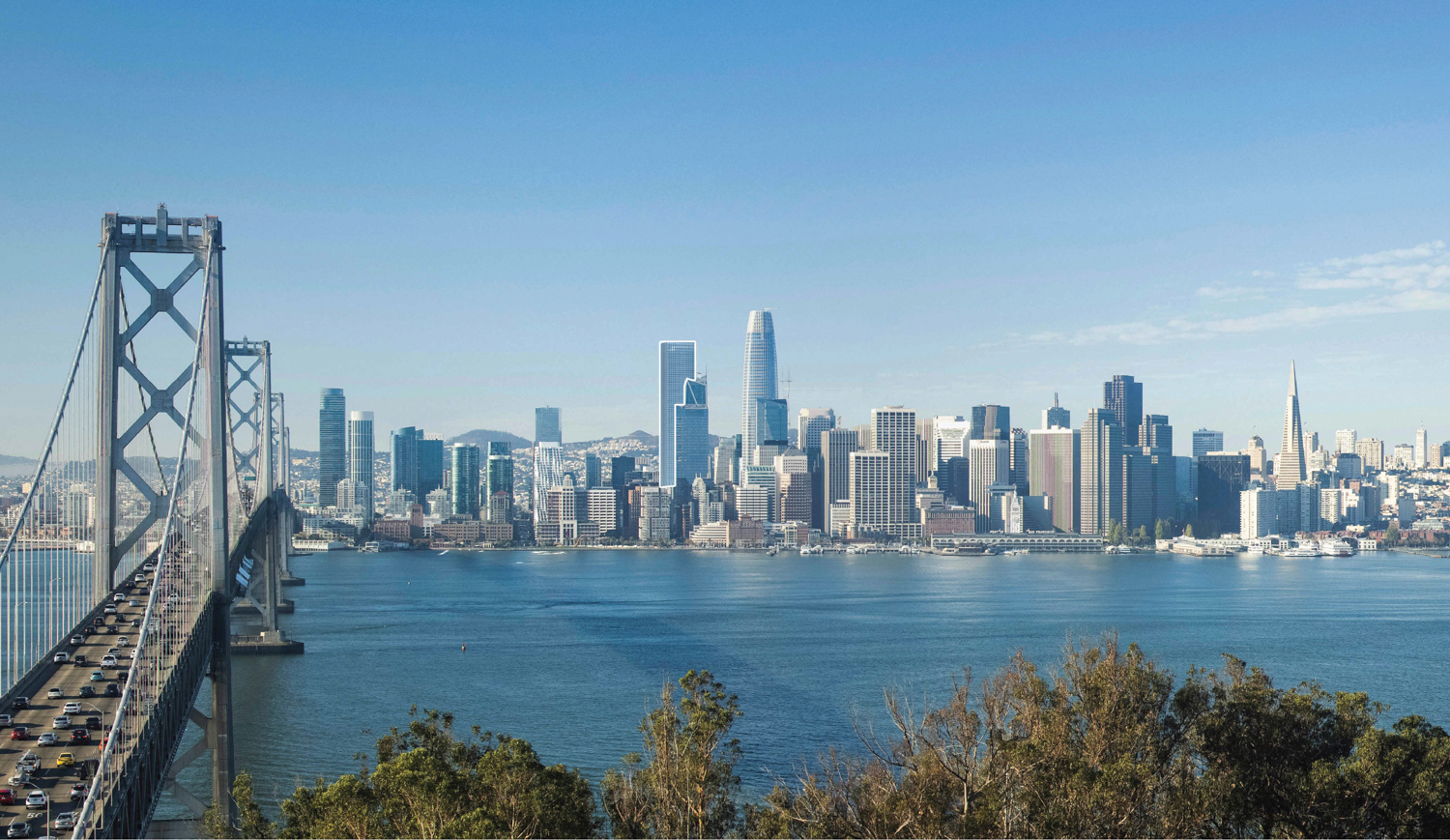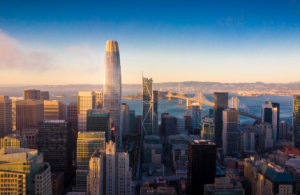Bayhill Ventures debuted last November with eye-catching plans for a new residential skyscraper in San Francisco during a period where most significant projects are on hold across the region. Last month, Bayhill’s founder and CEO, Paul Paradis, sat down with YIMBY to discuss the ambitious plans for 530 Howard Street, his reason for starting a new firm, and his optimism for San Francisco’s next top-end office tower.
At the core of our conversation were the firm’s three asset categories that Paradis is focused on: existing offices, housing entitlements, and securing development site opportunities. Combining local knowledge, a calculated approach, and patience, Paradis is confident in the prospects for investing in San Francisco and the city’s future.
530 Howard Street view from Treasure Island, rendering by Pickard Chilton
The following conversation between Paul Paradis and Rick Totten for YIMBY has been lightly edited for brevity and clarity. YIMBY in italics.
I’d like to start with the origins of Bayhill Ventures. You had this 33-year career with Hines, which, you know, from the projects that you have done, looks impressive. So what made you want to leave that safety of the paycheck and start up on your own?
I had a great career with Hines and look back on it with great memories. But the one thing you can’t do at Hines is run the company unless your last name is Hines. I’ve always had a dream to run a company, and the timing worked out well. My projects at Hines were in good form, and the real estate market was in a place where a startup could really thrive.
That’s quite interesting in terms of that startup opportunity. You position Bayhill as a startup in San Francisco. Are there other threads to that thesis that underlie Bayhill, which makes it well-positioned for this environment?
Yes, I’ve been through a number of downturns, and quite often, what happens in a significant downturn is you need to turn your attention to troubled assets, whether it’s repositioning, sorting out debt, or whatever the problems may be. With a startup, we have no problem assets because we have no assets. So we can focus completely on new opportunities. We’ve been enjoying that aspect of having a startup now.
In a downturn like this, many great opportunities exist to take advantage of. We’ll run through those and, in particular, what we’re focused on here at Bayhill, but being able to focus entirely on the new opportunities is a really exciting prospect for us.
Are you using any particular criteria when weighing up some of these opportunities?
I’ll give you the three primary things we focus on as our company strategy.
One is to acquire distressed office buildings. On the surface, that seems like a very simple concept, but it gets quite nuanced. You can’t just buy any distressed asset and assume it’s going to recover like the rising tide. In this particular cycle, I think that selecting the right office assets is essential, and it’s not easy unless you’ve got experience in the San Francisco market to understand the details of location and product type.
There will likely be a good percentage of the existing inventory that will never recover. And with one exception, those aren’t assets you will want to purchase. The one exception is the strategy of buying, tearing down, and building a different new product. Some of those obsolete office buildings are land acquisition opportunities. We’re looking at a number of those. And let me take a quick departure to say that we’ve studied the conversion of office to residential. And for us, it’s not a strategy that we will pursue.
In the middle, there are some more durable assets. We’re looking at some of those, but you need to be careful in that segment of properties because the purchase price is just the beginning. Office buildings are very capital-intensive. Depending on the particular building, you could double or triple the amount you need to invest in it to bring it back to life.
Then there’s timing. Some assets aren’t ready to trade yet because they haven’t, I like to use the term, ripened. We have two to three years during which more assets will go through their life cycle and reset to a current market value. That could mean foreclosure or a major ownership reset. We need to be patient because I think the opportunities will continue.
The final type of office buildings, which are not an acquisition target for us, are the ultra-premium buildings, the very best of the best. Those performed quite well through COVID and even now remain leased up and, in some cases, have increasing rents. That’s not a segment that Bayhill is focused on, but it’s an interesting segment because it’s performed so differently than most of the market.
So you’re looking at immediately distressed offices and offices in the next two to three years that might ripen, as you term it. What is the second strategy for Bayhill?
Our second is simple, which is apartment buildings. We are severely undersupplied for rent housing. We like finding great sites for apartment buildings and entitling them now because the pipeline for new apartment buildings in San Francisco is very thin to almost non-existent. We feel that in the coming years, we will see substantial upward pressure on rental rates. A new apartment building does not work financially today, but we think it will in the not-too-distant future. Now is an excellent time to prepare for that eventuality, and that’s what we’re doing.
We have the apartment building in for approval with the city of San Francisco at 530 Howard, which is actually this site and the next-door parking lot. That’s a beautiful project. We love the views the building will offer and the connection to Salesforce Park. Getting to a five-and-a-half-acre park really quickly is a big difference with the bridge between the building and the park. That application has been in the city for a couple of months, and the response from the city has been very favorable. We hope to have final approvals this summer.
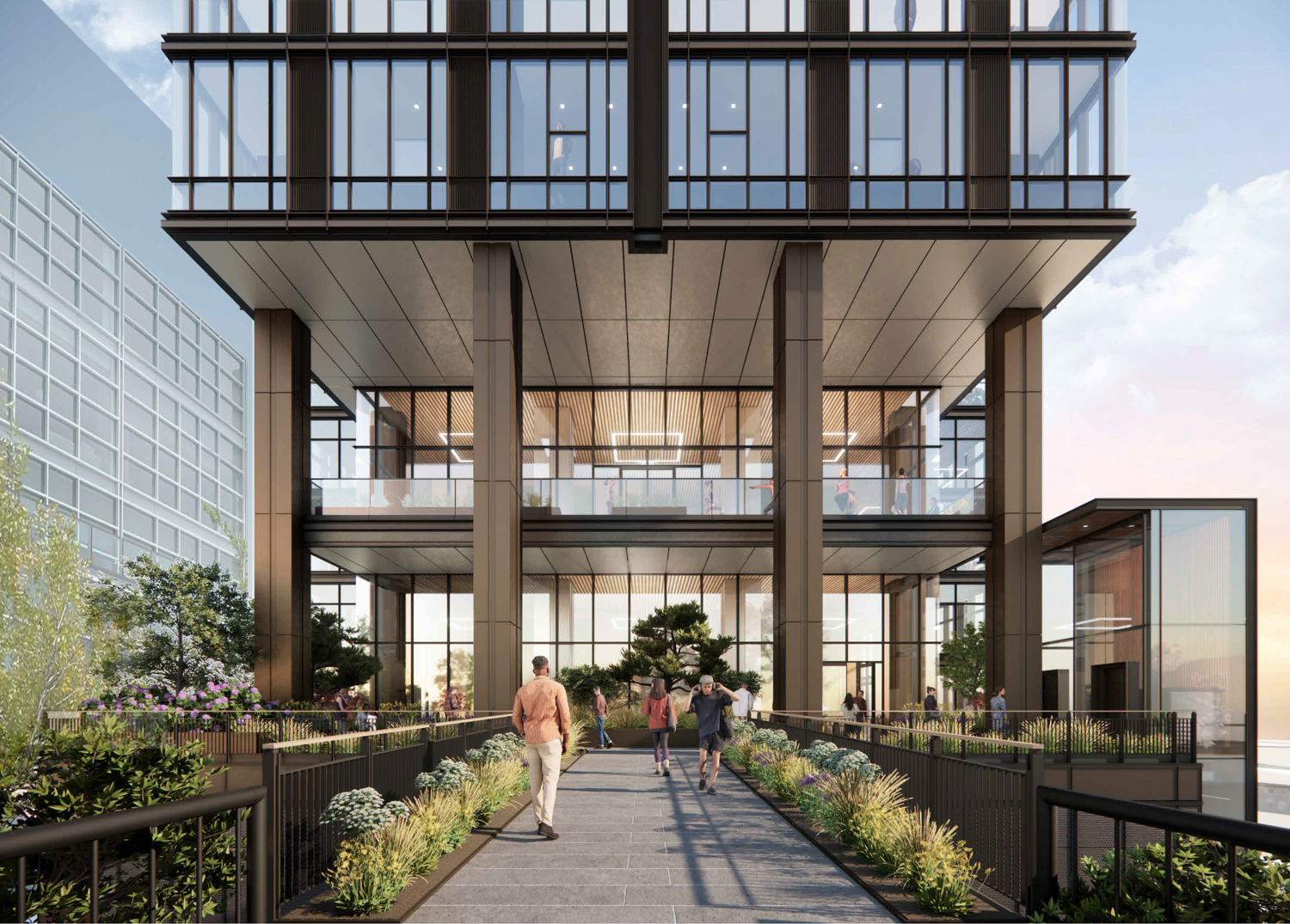
530 Howard Street view from the pedestrian bridge connecting to Salesforce Tower, rendering by Pickard Chilton
Yes, I have some questions about that project and AB 2011 in particular. Before that, though, what is your third focus?
The third is securing development opportunities for multiple product types for future development. What we’re finding is that right now, you can favorably secure or acquire development sites for a much more reasonable cost than during a normalized market. You can also get tremendous support from cities or local governments to get approval for those developments. Securing those, perfecting the development rights, and then waiting for the right time is that strategy. We like that strategy, so we’re employing it in several places.
We touched on 530 Howard Street, and you’re among the first developers to use AB 2011. How has that changed the landscape for developers, and do you think there’ll be a rush of developers looking to use this in the next year or two?
AB 2011 is certainly no secret. I do think that developers are going to start taking advantage of this. As I said earlier, while the economics for new buildings don’t work today, I think developers will begin to make plans for buildings with these new legislative benefits in the coming years. So yes, I think it will substantially increase the delivery of supply when the market rents support new construction again. And there’s more than just AB 2011.
We certainly saw your use of the state density bonus, and then there’s AB 1287, which could let you double that density bonus. Are you tempted to go for that as well?
You know, we think that our project is large enough. We won’t go for an additional up-sizing for 530 Howard Street. But there is another opportunity to make projects even bigger. We could use that on other sites that we’re pursuing because we are looking at other apartment development sites right now.
That would be interesting. Is there anything you can share?
Nothing to announce yet.
Looking at the third strategy, what is your vision there?
We are quite keen on securing a world-class site for a new office building. We think that at some point in the not-too-distant future, San Francisco will need another great office building. A lot of people will hear that and think we’re crazy, but to think that San Francisco will never need another office building is just not reasonable. In the early years when Salesforce Tower was just a thought, and we were in the middle of the great financial crisis. The thought of a new office building in San Francisco was absurd, but it was a great time to prepare for that future eventuality. When the market did come back, we couldn’t have been more thrilled that we were ready to go with Salesforce Tower. So it’s the same type of environment right now.
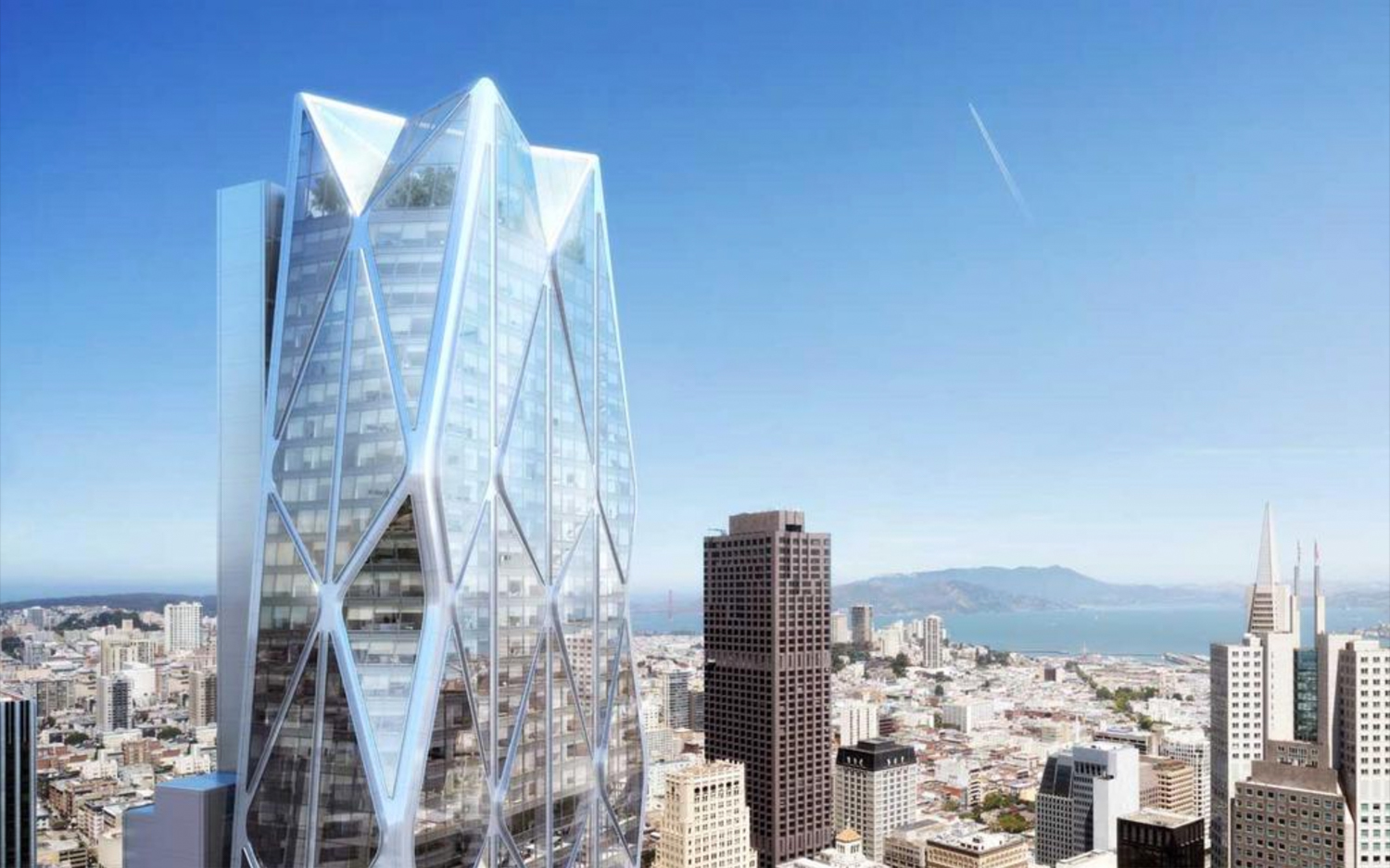
Oceanwide Center, design by Foster + Partners with Heller Manus Architects
There are a few opportunities around here for that, right? There’s the former Oceanwide Center project, whose foundation has already been built.
We don’t have any time spent on First & Mission. But it would be lovely to see that project built at some point rather than to have that steel sitting there. That’d be really nice.
Then, we do have a partnership with Sugar Bowl to expand the resort to Lake Tahoe. So that’s something that’s keeping us busy. Sugar Bowl is creating more housing sites and expanding the base lodge, so that’s been a fun assignment for us.
How are you underwriting that operational phase at the moment when there’s a lot of volatility and uncertainty?
We are tracking the rental rates for the highest end of the apartment buildings in San Francisco. They did dip during COVID-19, and the occupancies also went down. What we’re seeing now in the market is that those highest-quality buildings are full again and that the rents are beginning to increase. It’s the beginning of a trend that we think will continue for a number of years.
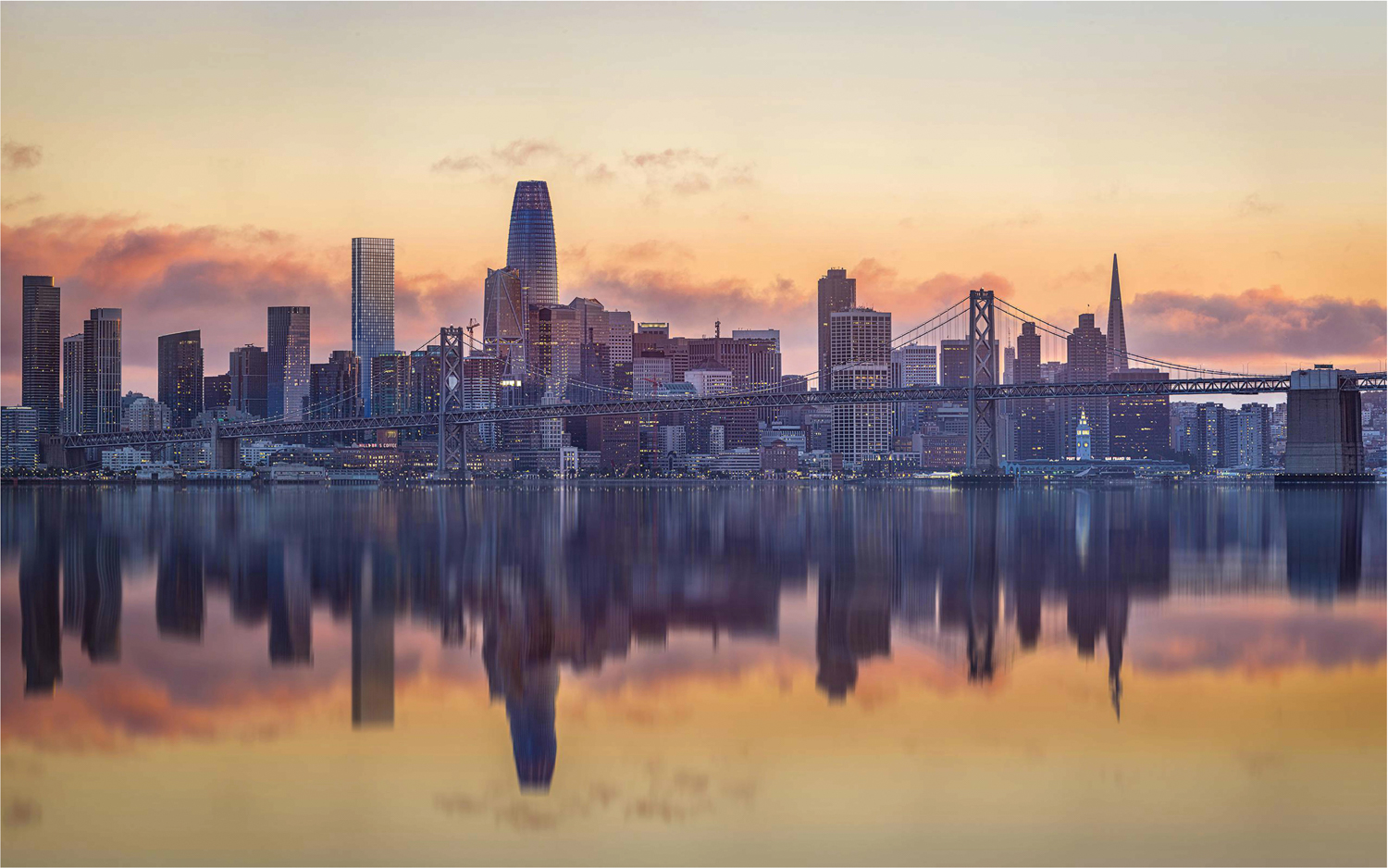
530 Howard Street view from across the bay, rendering by Pickard Chilton
I understand that you’re raising capital for the General Partnership (GP) side of the business at the moment. How is that going, and what has the reaction been?
It’s going great. The response has been very favorable, and we’ll have our first closing in March. People understand the beneficial investment environment in San Francisco right now.
Have you started having the conversations with the banks who would be obviously much more [financially] conservative and Limited Partnerships (LP) partners who might be a little bit more conservative again?
No, because at this point for all of the development projects, we’re going through a design and entitlement process now. That’s a nice aspect of this timing. We’re doing our prep work now where we don’t have to deal with banks or LPs, and that takes between one to three years. Then, hopefully, when you’re in that environment where you’re ready to build and talk with lenders and LPs, the environment will be better. Typically, you’re not going to want to speak with LPs until you have your entitlements complete because that’s a risk that many of the larger institutional LPs don’t want to deal with.
Subscribe to YIMBY’s daily e-mail
Follow YIMBYgram for real-time photo updates
Like YIMBY on Facebook
Follow YIMBY’s Twitter for the latest in YIMBYnews

